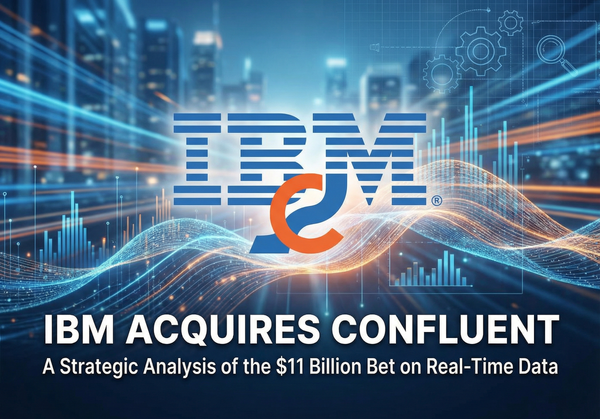Alternative Data in Investing: Key Sources, Benefits, and Challenges
Why Alternative Data Matters in Investing
Traditional data sources – company earnings reports, analyst forecasts, economic indicators – are essential but no longer sufficient to gain a significant edge.
Alternative data has emerged as a revolutionary way for investors to analyze opportunities, spot trends, and generate alpha—returns that outperform the broader market. Unlike traditional financial metrics, which are often backward-looking, alternative data provides real-time or near-real-time insights, acting as a powerful leading indicator of market performance.
What is Alternative Data in Investing?
Alternative data refers to information used for financial analysis that doesn’t come from traditional channels like financial statements, stock prices, or government reports.
- It is often unstructured and collected in non-traditional ways.
- It offers unique, real-time insights into consumer behavior, company health, and economic activity.
- When properly analyzed, it can reveal signals before they appear in conventional metrics.
The Rise of Alternative Data
The explosion of digital information, combined with advancements in artificial intelligence and big data processing, has fueled the growth of alternative data.
From smartphones and online interactions to satellite imagery, vast amounts of data are constantly being generated. When aggregated and analyzed, this data creates a detailed picture of corporate performance and economic trends.
Key Types of Alternative Data and Their Applications
Here are some of the most impactful types of alternative data investors use today:
- Transactional Data (Credit/Debit Card, Email Receipts)
- What it is: Anonymized and aggregated data from consumer purchases.
- How it’s used: Tracks real-time spending patterns, predicts company revenues, and gauges consumer confidence.
- Example: Analyzing fast-food chain spending can indicate quarterly performance before official earnings reports.
- Geolocation/Foot Traffic Data
- What it is: Mobile device data showing movement and customer visits.
- How it’s used: Measures store traffic, event attendance, and even construction activity.
- Example: Satellite imagery of retail parking lots can forecast store sales.
- Web Traffic & Search Data
- What it is: Data on website visits, app downloads, and online search queries.
- How it’s used: Identifies consumer interest, brand engagement, and emerging market demand.
- Social Media Sentiment & News Analysis
- What it is: Analysis of text, comments, likes, shares, and overall sentiment from social media platforms, news articles, and online reviews using Natural Language Processing (NLP).
- How it's used: Gauges public opinion about companies, products, or industries, helps identify potential reputational risks, and can even predict short-term stock movements based on real-time sentiment shifts.
- Satellite Imagery
- What it is: Visual data collected from satellites.
- How it's used: Monitors large-scale economic activity, such as tracking oil tanker movements, assessing crop yields, observing construction progress, or even counting cars in factory parking lots to estimate production levels.
- Supply Chain Data
- What it is: Information on shipping, port activity, and supplier networks.
- How it’s used: Highlights operational strengths, risks, and potential disruptions.
- Workforce Analytics
- What it is: Data on job postings, employee sentiment, and hiring trends.
- How it’s used: Predicts growth potential, labor issues, or industry expansion.
- ESG Data (Environmental, Social, Governance)
- What it is: Non-traditional data about sustainability and governance practices.
- How it’s used: Helps investors assess long-term resilience and ethical performance.
Benefits of Alternative Data for Investors
- Competitive Edge (Alpha Generation): By accessing and analyzing unique data, investors can uncover insights that others miss, leading to more accurate predictions and outperformance.
- Early Signals: Spot real-time shifts in sentiment, performance, or trends.
- Comprehensive Analysis: It offers a more granular and dynamic understanding of current market conditions, complementing traditional financial reports which are often backward-looking.
- Better Risk Management: Detect hidden risks in supply chains or consumer sentiment.
- Portfolio Diversification: Identifying opportunities in niche industries or emerging trends that might not be visible through traditional lenses.
Challenges of Using Alternative Data
- Data Quality & Accuracy: Unstructured datasets can be noisy or biased.
- Cost & Accessibility: Premium datasets are expensive, often favoring hedge funds.
- Complex Integration: Integrating diverse datasets and extracting actionable insights often requires advanced data science and machine learning capabilities.
- Signal vs. Noise: Sifting through massive amounts of data to find truly predictive signals can be challenging, requiring robust methodologies to avoid drawing spurious conclusions.
The Future of Data-Driven Investing
The global market for alternative data is booming, with AI and machine learning making it easier to process massive datasets. While adoption has been strongest among hedge funds and asset managers, tools and platforms are becoming more accessible to retail investors.
Alternative Data for Retail Investors
Retail investors are not completely excluded from this trend. Options include:
- Free or low-cost web tools: Public web traffic trackers, app store analytics, and basic sentiment tools.
- Open-source data: Government datasets, public APIs, or academic research often provide valuable alternative data points that can be integrated into personal analysis.
- Published reports: Research firms sometimes release insights derived from alternative data.
- Niche focus: Instead of broad market predictions, focus on specific companies you are researching and look for relevant alternative data signals (e.g., foot traffic, job postings).
Alternative Data as a Complement, Not a Replacement
Alternative data is not a substitute for traditional financial analysis. Instead, it should be seen as a powerful complement, offering deeper, faster, and more granular insights.
The future of investing is data-driven. Those who can effectively harness alternative information will be better positioned to outperform the market.
FAQs on Alternative Data in Investing
1. What is alternative data in investing?
Alternative data is non-traditional information—such as satellite imagery, social media sentiment, or transaction data—used to analyze companies and markets.
2. How do investors use alternative data?
They use it to forecast earnings, measure consumer demand, monitor supply chains, and spot emerging trends.
3. Can retail investors use alternative data?
Yes. While premium datasets are costly, retail investors can use free tools, open-source data, and published research to gain insights.
4. What are the risks of alternative data?
Challenges include high costs, data quality issues, and the difficulty of distinguishing meaningful signals from noise.
Final Thoughts
Alternative data is reshaping investing by offering real-time insights into market behavior. While challenges exist, its potential to enhance returns, manage risks, and uncover hidden opportunities makes it a critical tool for modern investors.



